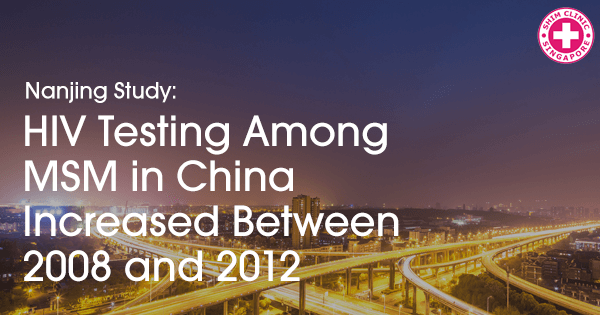The number of HIV infections among men who have sex with men (MSM) has gone up quite a bit in China. In just 6 years from 2003, the rate of infections has increased from 2.6% to 7.4%.
The Chinese government developed national guidelines on the prevention of HIV specifically for MSM in 2006. It included a HIV package that comprises peer education, HIV tests and counseling, condom promotion, STD testing and treatment as well as providing support and clinical care for people living with HIV.
The Study
Hongjing Yan, Jianjun Li, H. Fisher Raymond, Xiping Huan, Wenhui Guan, Haiyang Hu, Haitao Yang, Willi McFarland, Chongyi Wei from Jiangsu Provincial Centers for Disease Control and Prevention, Nanjing, Jiangsu, China, Department of Epidemiology and Biostatistics, University of California San Francisco, San Francisco, California, United States of America, San Francisco Department of Public Health, San Francisco, California, United States of America conducted a study on HIV testing among MSM in Nanjing, the capital of Jiangsu province in eastern China between 2008 and 2012 to determine the uptake of HIV testing with a rise in HIV prevalence among the group. The study was based in Nanjing because it has an approximate population of 20,000 gay men and other MSM.
The researchers carried out two cross-sectional survey studies in 2008 and 2012 following procedures from Respondent-driven Sampling (RDS) at the Jiangsu provincial HIV testing and counseling STD clinic, a selected MSM sentinel surveillance site since 2006 and where a high number of HIV testing for MSM in the city is conducted.
Selection of Participants
The participants had the following characteristics:
- Were 18 years or older
- Were all male
- Were reported to have engaged in anal or oral sex with another man in the past year
- Were willing to go through HIV, syphilis and HSV-2 testing
Measures Used
Participants were administered with a brief face to face questionnaire in private by trained personnel. Information collected included, age, sexual orientation, marital status, official residential status, level of education and income.
The participants were also asked to give information on the number of male sex partners they had, the number of incidents they had engaged in unprotected anal sex with men, if they had sex for money, cases of sex with women, HIV testing and STIs history in the last year.
Blood samples were also collected for HIV, syphilis and HSV-2 testing where positive results for HIV were retested.
Results of the Study
430 MSM completed the survey from May to August 2008 and another 589 between September and December 2012.
Testing for HIV increased in 2012 almost by half as compared to 2008 with HIV prevalence remaining stable. HIV testing significantly rose to 46.0% in 2012 from 20.1% in 2008.
The researchers established that this rise was as a result of changing policies in favor of HIV testing, an increase of up to 9000 testing sites, and increased support for MSM community-based organizations to ease access of testing.
Conclusion
In conclusion, the study offers great insights into the benefits of HIV testing for both an individual and the community at large. For the individual, he gets information on how to prevent a HIV infection such as using protection while having sex.
In the event of positive results, the individual gets information on proper care and treatment and how to live with HIV as well as detection of the infection in its early stages.
See the full study here: http://journals.plos.org/plosone/article?id=10.1371/journal.pone.0154466

